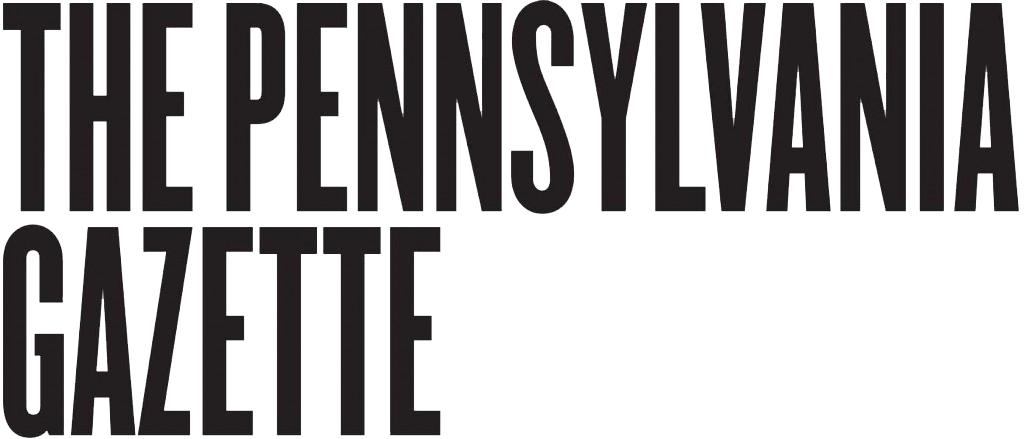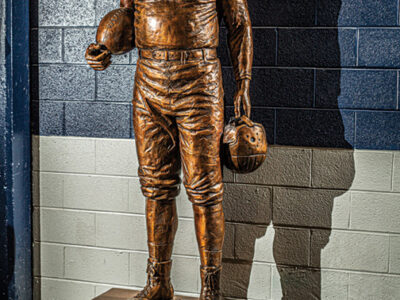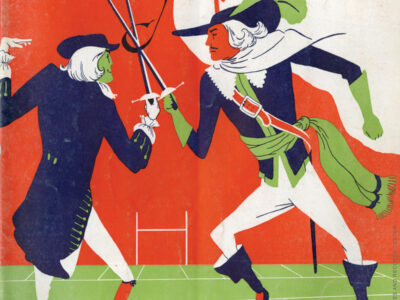By David Porter
Ask a college football coach to make a prediction regarding his team—or someone else’s team, or about whether the sun will rise in the east tomorrow morning—and you are liable to get a response that is short on specifics and long on equivocation. This stems not from any lack of insight or boldness; rather, it is because coaches know better than anyone the myriad factors that can render predictions and game plans meaningless.
They tend to leave this fool’s errand to talking heads and sports columnists, and the first half of Penn’s 2009 football season demonstrated the wisdom of that choice.
On paper, this was to be the season when sophomore Keiffer Garton, the dual-threat quarterback who emerged in the second half of last season as the Ivy League’s answer to Heisman Trophy winner Tim Tebow of Florida, would continue to shred defenses with his legs and arm; when senior Chris Wynn would continue to display his own versatility as a punt and kick returner and as perhaps the league’s best defensive back; when juniors Michael DiMaggio (last season’s leading rusher) and sidekick Bradford Blackman would pummel opposing defenses with a one-two punch.
The reality has been somewhat different, as Garton and the former starter, senior Kyle Olson, went down with injuries, as did freshman quarterback Billy Ragone. Ragone was named Ivy rookie of the week for his performance in a 30-24 win against Dartmouth on October 3, but broke his collarbone in the game and is expected to miss the rest of the season. Wynn, DiMaggio, and Blackman also suffered injuries, leaving Penn coach Al Bagnoli with a sense of déjà vu as he juggled his roster and plucked untested underclassmen off the bench to fill in. Fortunately for the Quakers, the kiddie corps played like veterans in helping Penn to a split of the season’s first four games.
Apparently, it wasn’t enough for Bagnoli to have to reach down to the far end of the bench last season and pull Garton—at the time the Quakers’ fourth-string quarterback—out of his hat to help Penn finish out a 5-2 Ivy League season, its best in several years. This year, a similar spate of injuries left the 18th-year head coach down to his fourth quarterback by the season’s fourth game. Again, the results were impressive.
A year ago, Garton came off the bench to spark a 14-9 win at Princeton that kept the Quakers alive in the Ivy race in Week 8. This time it was sophomore John Hurley taking over against Bucknell on October 10 and shepherding Penn’s offense to a 21-3 win that provided the Quakers with some momentum as they headed into the meat of the Ivy schedule.
Hurley’s 14-for-27, 148-yard performance against the Bison was about as much as could be expected in a varsity debut—even from a player whose high school, St. Xavier of Cincinnati, is one of the nation’s powerhouse prep programs. Bagnoli lightened the load on Hurley by occasionally using senior wide receiver Kyle Derham and running back Matt Hamscher, a sophomore, as relief QBs; the two combined to complete four of their six passes, including Hamscher’s 5-yard touchdown pass to Luke DeLuca.
“I had butterflies, but I was ready,” Hurley said. “It’s been a long time, but I was really excited to get back out there. We have a really good support system. Coming into the game, I didn’t feel like I was going to have a huge burden on me to make huge plays.”
It was a reflection of the group effort that Derham, the team’s leading receiver and a former high-school quarterback, threw five passes and ran twice for 14 yards but wasn’t one of the nine Penn players to catch a pass in the game. Through the first four games, Derham was one of 14 players to catch at least one pass, and led with a total of 13. Seven players had thrown at least one pass.
The rushing statistics for the first four games found a new face atop the leaderboard, but one who figures to become more familiar in a hurry. Ankle injuries suffered by Blackman and DiMaggio in the opener against Villanova opened the door for freshman Lyle Marsh, and the 6-foot, 215-pounder all but kicked it down, running for 86 yards in a 20-17 overtime loss to Lafayette, then 120 yards in the win at Dartmouth and 39 more and a key touchdown against Bucknell.
Marsh hails from the football-mad suburbs of Pittsburgh, and true to his blue-collar pedigree is a no-nonsense, straight-ahead runner who relishes building up a head of steam and bowling over tacklers—“running downhill,” as coaches are fond of calling it.
“We’ve had a few injuries in the backfield, and I’ve had a chance to step up and help the team,” Marsh said. “There’s a lot of talent in the backfield, but that makes it better for all of us because there’s competition between us.”
Marsh’s only faux pas this fall may have been wearing his Pittsburgh Steelers jersey in Eagles country, but even that is bound to be tolerated if he keeps churning out the yards when he dons the Red and Blue.
“It doesn’t go over too well here, but people have been OK,” Marsh said.
Defensively, it was more of the same for a team that perennially finishes at or near the top of the Ivy charts in a host of statistical categories. Through four games the Quakers were holding opponents under 100 yards per game rushing and hadn’t allowed an individual 100-yard performance by an opposing running back since midway through the 2007 season. Led by senior linebacker Jake Lewko, who was a holy terror for opposing offenses and was on a pace to surpass last year’s team-leading tackles total by sometime around the middle of the season, Penn led the Ivies in fewest yards and points allowed. The performances were more impressive considering Wynn, the Quakers’ defensive mainstay, missed the Dartmouth and Bucknell games due to injury.
He was expected back, as were Garton and Olson, as the Quakers prepped for an Ivy schedule that featured some interesting subplots created by Columbia’s 38-0 thrashing of Princeton on October 3 and Cornell’s 14-12 win over Yale the week before. That the two New York teams picked sixth and seventh in the Ivy preseason poll were able to confound the experts so early and so easily should come as no surprise.
David Porter C’82 writes for the Associated Press.




